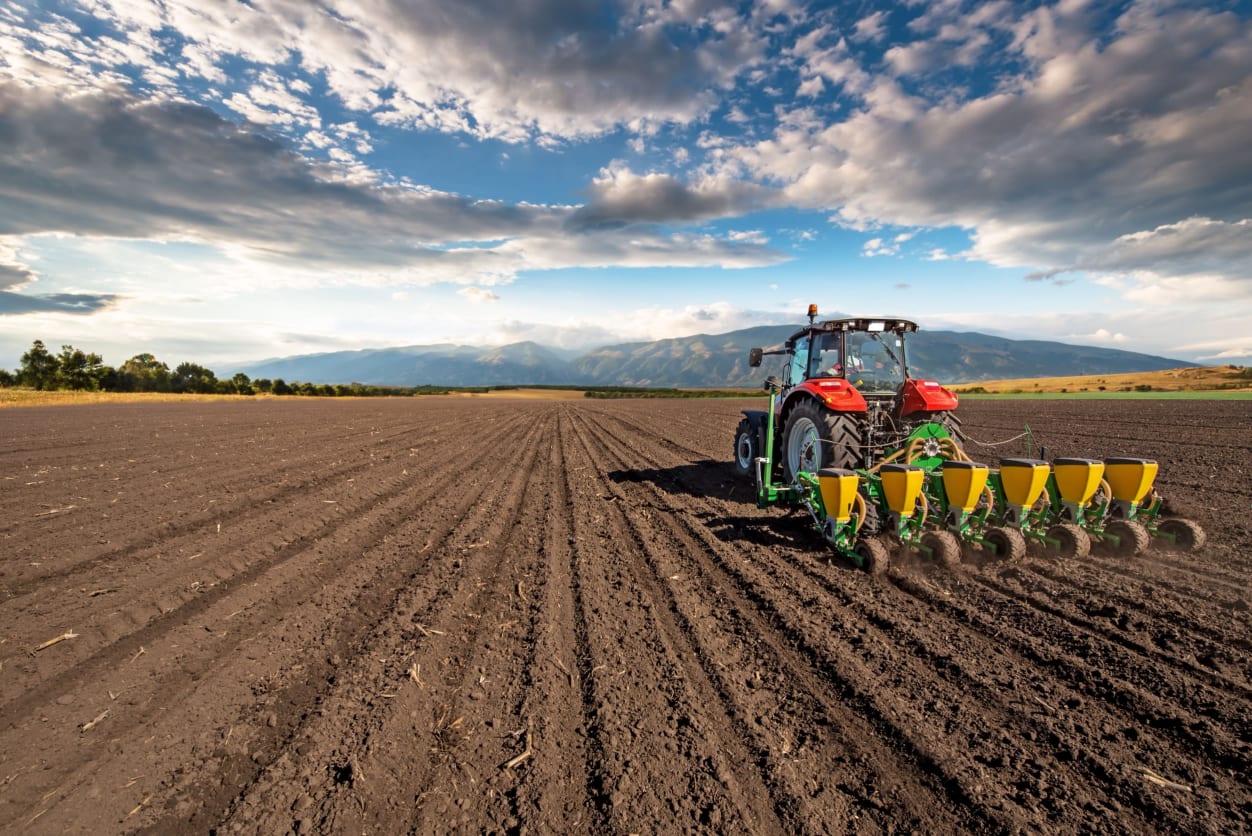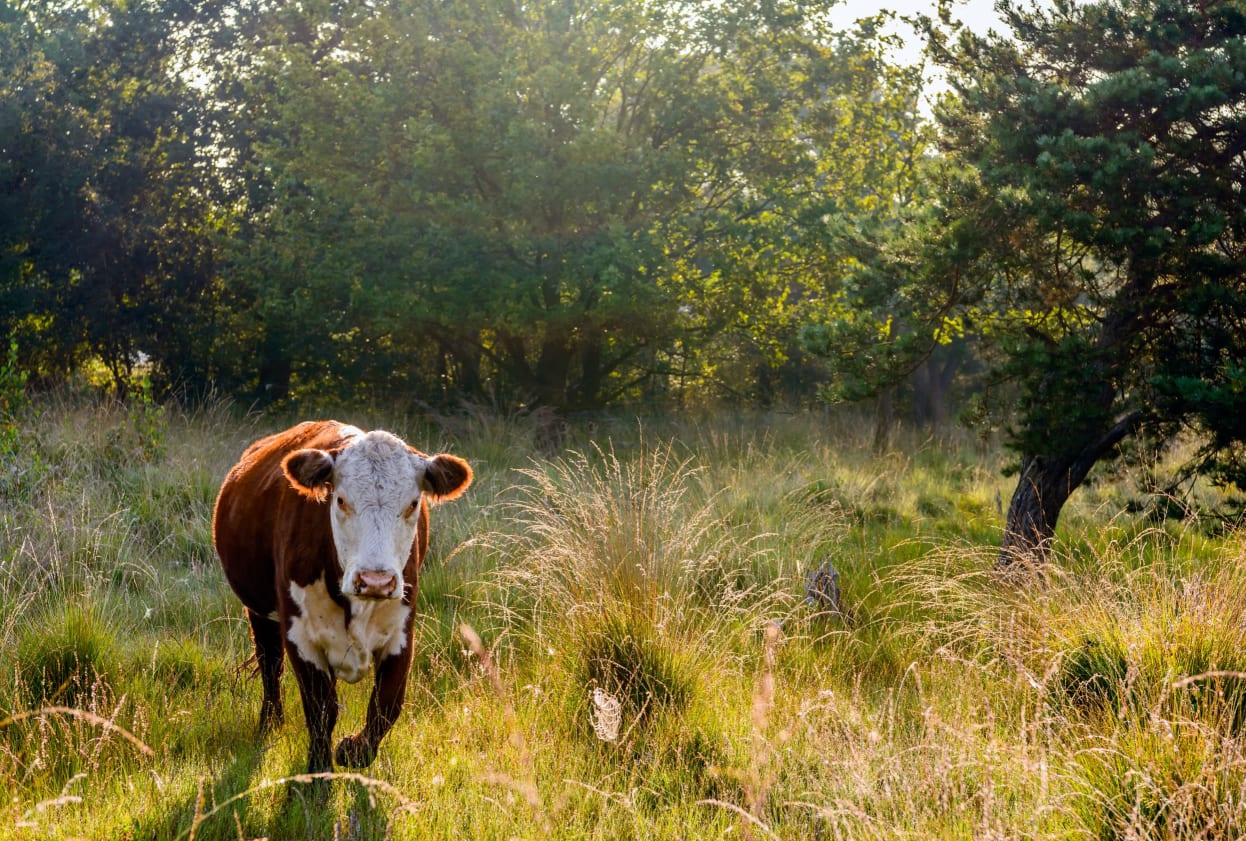Soil quality affects the health of our planet, our food, and ourselves. Some say it’s the answer to the climate crisis – but it’s turning to dust. Can our food choices help?
The following is a shortened version of an article by Hatty Willmoth from the Autumn 2022 issue of Optimum Nutrition.
Soil might be the most important issue you don’t already know about.
In the words of Netflix documentary Kiss the Ground, “it could just be the one thing that could balance our climate, replenish our fresh water supplies, and feed the world”.
Humans emit around 30 billion tons of carbon dioxide (CO2) per year, but soil can draw down CO2 from the air via plants conducting photosynthesis, locking carbon into the ground and releasing oxygen.
This is called carbon sequestration, and it could halt the march of climate change.
Our soils are turning to dust
Unsustainable agricultural practices are eroding our soils; 90% of conventionally farmed soils are thinning, according to a global study led by Lancaster University.
Tom Denman set up Chefs Farms, a fruit and veg wholesaler which asks its growers to use techniques that “improve soil diversity, biodynamics within the crop, biodiversity, and also carbon sequestration”.
He says the problem is: “People grow stuff in the soil; they don’t work with the soil to grow stuff.”
Tilling, for example, is a method of industrial ploughing that breaks up the soil with heavy machinery, clearing it of debris to plant new crops.
Tilled soil is less able to retain moisture and sustain life, and more susceptible to erosion.
Julie Cleijne, founder and CEO of Sustainable Kitchen Consultants (SKC) and soil consultant, says monocropping is also a big problem.
This is when the same ground grows a single crop for an extended period of time.
“Monocropping was introduced to farming to produce food as commodities, to obtain higher yields, consistency and speed of production, at the expense of our environment,” she says.
“Monocrops remove diversity from our soils and this has led to a reduction in biodiversity of animal, plant and insect life.”
These techniques – as well as others such as using fertilisers and pesticides – are depleting our soils, releasing rather than trapping carbon, and gradually turning living dirt into desert, say experts.

Regenerative agriculture
Cleijne is an advocate of ‘regenerative agriculture’, which is guided by five principles:
- minimising soil disturbance
- keeping the soil surface covered
- keeping living roots in the soil
- growing diverse crops
- integrating grazing animals into crop rotations
Reducing or eliminating tilling allows the previous crop to be left on the ground and helps preserve soil structure.
Growing diverse crops is also important to improve its biodiversity: cover crops, mixed crops, and crop rotation are all important here.
And farmers can use natural solutions instead of chemical fertilisers and pesticides.
Denman says it’s about “creating those circles and letting it all do its own thing”.
Unfortunately, regenerative farming doesn’t happen overnight, and the transition stage will likely see lower yields.
Healthy soil, healthy food, healthy us
According to Cleijne, healthier soil also grows healthier food.
The more microbial biodiversity there is in the soil, she says, “the more nutrients can be transported from the soil into our crops, making them more nutrient dense”.
Research has found that crops grown using ‘soil friendly’ practices contained more minerals, vitamins and antioxidants than conventionally-grown crops.
Cleijne says: “Soil health decline has been shown to correlate with decreased nutrient density in our crops, and therefore we are not getting sufficient macro- and micronutrients in our diets.
“All over the world, there’s been a parallel progression of soil health decline and rise in chronic disease.”
Fans of regeneratively-grown produce also say it tastes better. Cleijne says: “If you’ve ever seen a pale-looking tomato, and been unsurprised that it didn’t taste very good, then you’ll understand the correlation between healthier produce and great taste.
“If a crop is rich in nutrients, it will be healthier, stronger looking and likely to taste better.”
The animal conundrum
Animals are a central and highly contested piece of the puzzle.
Intensive factory farming emits massive quantities of CO2; and globally, around two thirds of all livestock is factory farmed.
But when used in crop rotations, ruminants such as cows and sheep— which emit the greenhouse gas methane — can revive soil ready for a new crop.
When grazed on pasture, dung acts as fertiliser, and hooves aerate the soil and sequester carbon.
Denman says that farming livestock alongside crops is “imperative to producing good methods”.
“In regenerative farming and circular farming, it’s part of what we do,” he says.
But high-welfare animal farming can be extremely land intensive; and in mixed farming, the more that animals are kept outside, the more land is swallowed up into agriculture.
Studies show this is terrible for biodiversity; and some experts argue that the environmental benefits of rewilding and planting trees would far outweigh the benefits of keeping livestock.

What we can do
“Buying consciously, reading labels, and knowing where your food is from and how it’s grown, makes a huge difference,” says Denman.
Certifications by Red Tractor, the Soil Association and Pasture for Life can indicate food grown by farmers incentivised to use some regenerative techniques, and recently there have begun to be assurances and tools specifically indicating regenerative farming.
Buying local, seasonal produce is also a step in the right direction; Denman says consumers should buy food “because it’s a cool product” and work out what to do with it, rather than stick unwaveringly to habits.
Buying what’s available helps to stabilise consumer demand, which in turn enables regenerative practices.
Finally, if you eat meat at all, it is arguably better to buy higher-quality produce, less often, and preferably from a butcher.
That way you can ask where the meat has come from, request cheaper cuts rather than compromising on quality, and play a part in lessening the damage of meat production.
Enjoyed this article?
Learn about the toxic chemicals polluting our food
For articles and recipes subscribe to the Optimum Nutrition newsletter
Discover our courses in nutrition






